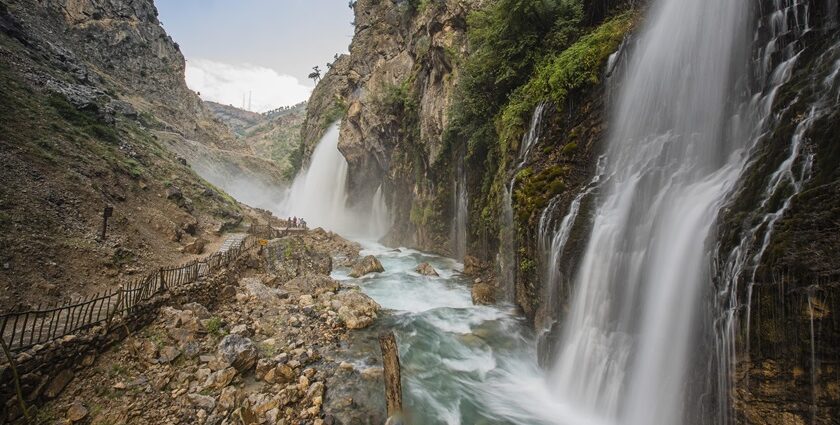Located in the Catlins region of New Zealand, McLean Falls is a natural wonder that attracts both nature lovers and adventure seekers. The waterfall cascades from a height of 22 meters, creating a beautiful sight in the middle of lush greenery. It is one of the most famous waterfalls in the region and offers an easy walking track to reach the main viewpoint. You can explore the natural surroundings, take photos at the waterfall, or enjoy the view—this location is a must-visit. This guide will cover the McLean Falls location, travel details, nearby places, accommodation, food options, and more.
Location
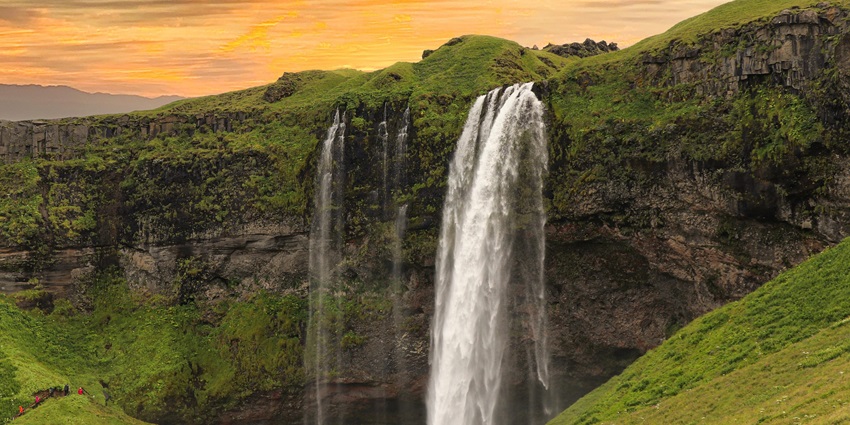
Photo: nextvoyage / Pixabay / Image For Representation Only
The waterfall is in the Catlins Conservation Park on the South Island of New Zealand. It is part of the Tautuku River and along the scenic Southern Scenic Route. The waterfall is accessible via a short walking trail from the Rewcastle Road car park. The area is well-maintained and provides clear signage for visitors. The waterfall is located on Rewcastle Road, Chaslands, The Catlins, New Zealand
How To Reach
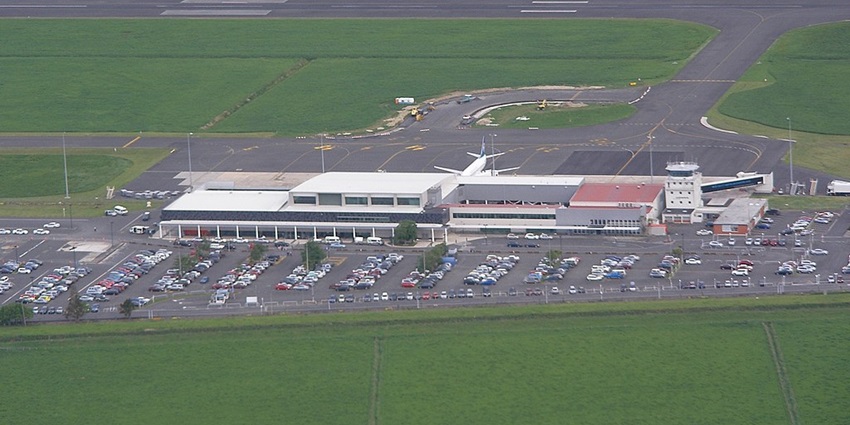
Photo: Andrewrutherford / Wikimedia Commons
By Air: The nearest airport to the waterfall is Dunedin International Airport (DUD), about 150 km away. From the airport, visitors can rent a car or take a bus to reach the Catlins region.
By Bus: There are no direct bus services to where is McLean Falls, but visitors can take a bus from Dunedin or Invercargill to Owaka, the closest town. From Owaka, taxis or rental cars are the best options for reaching the waterfall.
By Rail: New Zealand does not have direct train services to the Catlins region. However, visitors can take a train to Dunedin or Invercargill and then continue by road.
Places To Visit In and Around McLean Falls
Discover the top places to visit in and around McLean Falls for a refreshing trip.
1. Cathedral Caves
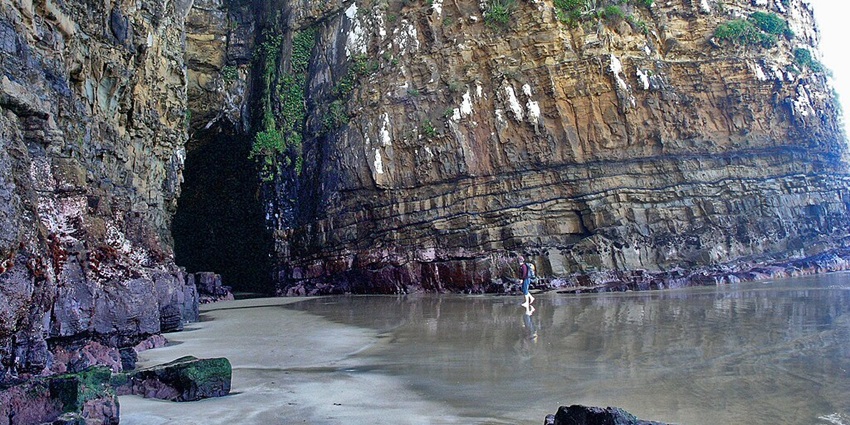
Photo: Dave Bunnell / Wikimedia Commons
Cathedral Caves are tall sea caves along the coast, formed by waves eroding the sandstone cliffs over thousands of years. The two caves connect inside, creating a long passage. The tallest part reaches up to 30 metres, making it one of the highest sea caves in the world. The caves are important to the Māori people, and their legends speak of spirits living there. Visitors can walk through the caves, explore the rock formations, and take photos when the tide is low. The best time to visit is sunset when the light creates reflections inside the caves.
Timings: Open during low tide
Entry Fees: NZD 10 / ₹500
Ideal Trip Duration: 1 – 2 hours
2. Purakaunui Falls
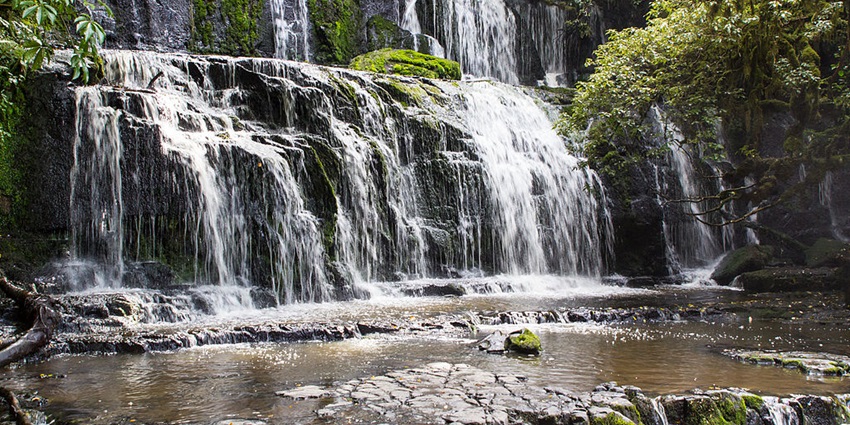
Photo: Oren Rozen / Wikimedia Commons
Purakaunui Falls is a three-tiered waterfall in the Catlins region. The waterfall drops over a series of steps, making it unique among waterfalls in New Zealand. It has been featured on postcards and stamps, making it one of the most recognisable waterfalls in the country. The surrounding area is filled with native trees, and the short walk to the falls passes through a beech and podocarp forest. Visitors can take photos, enjoy a picnic near the river, or listen to the sound of flowing water. During heavy rain, the waterfall becomes even wider and more powerful.
Timings: 24*7
Entry Fees: N/A
Ideal Trip Duration: 30 minutes – 1 hour
3. Nugget Point Lighthouse
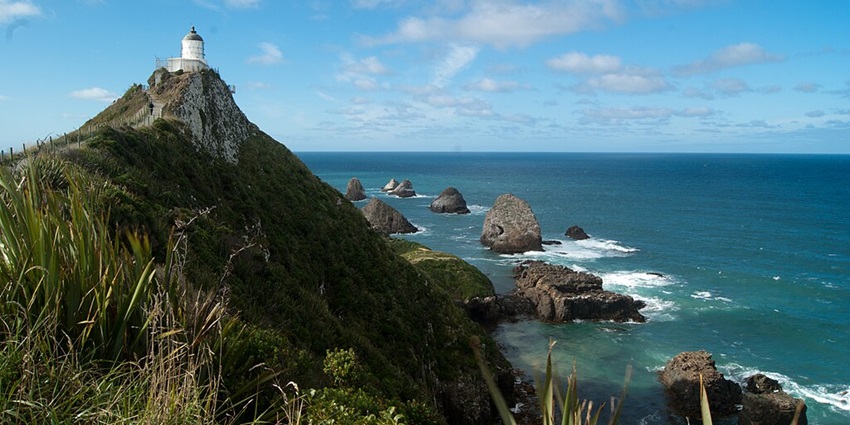
Photo: Enrique Fernández / Wikimedia Commons
Nugget Point Lighthouse is situated on a rocky headland overlooking the ocean. The lighthouse was built in 1870 to guide ships, as the waters around it are dangerous due to the large rocks called “The Nuggets.” These rocks are home to fur seals, sea lions, and seabirds, including yellow-eyed penguins. Visitors can walk to the lighthouse on a well-maintained path and see the coastline from the viewing platform. People often bring binoculars to watch the wildlife. The sunrise view from the lighthouse is popular, as the early morning light turns the ocean golden.
Timings: 24*7
Entry Fees: N/A
Ideal Trip Duration: 1 – 2 hours
4. Surat Bay
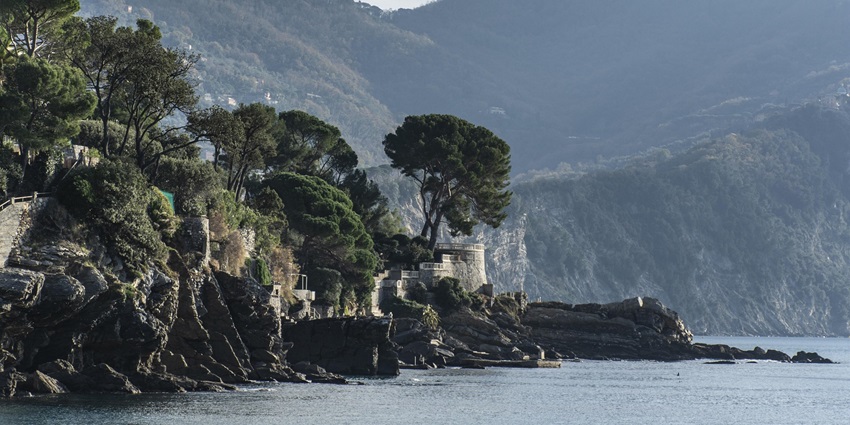
Photo: mirkobozzato / Wikimedia Commons / Image For Representation Only
Surat Bay is known for its long beach and the New Zealand sea lions that rest on the sand. It is named after the ship “Surat,” which was wrecked here in 1874. The beach is wide and open, making it great for long walks. Visitors often see sea lions sleeping or playing in the water. The bay is also good for birdwatching, as many seabirds feed along the shoreline. People can walk from Surat Bay to Cannibal Bay, another beach nearby. The best way to explore the area is on foot, as it allows time to see the wildlife.
Timings: 24*7
Entry Fees: N/A
Ideal Trip Duration: 1 – 2 hours
5. Jack’s Blowhole
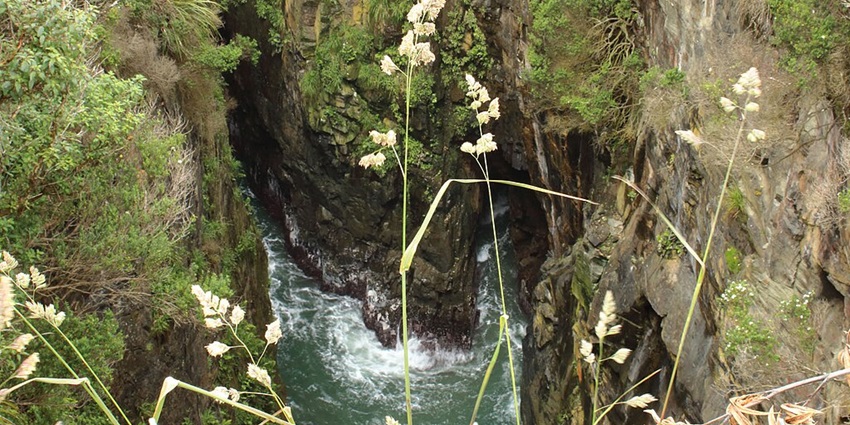
Photo: Remi Jouan / Wikimedia Commons
Jack’s Blowhole is a large hole in the ground located about 200 metres from the sea. The hole is 55 metres deep and was formed when a sea cave collapsed. Water rushes into it through an underwater tunnel, creating a loud sound when waves crash in. The blowhole is named after a local farmer, Jack McCall, who owned the land. The walk to the blowhole goes through farmland and offers coastline views. Visitors can watch the waves push water into the hole, especially during high tide. The sound and spray of water make it a unique sight.
Timings: 24/7
Entry Fees: N/A
Ideal Trip Duration: 1 – 2 hours
Where To Stay
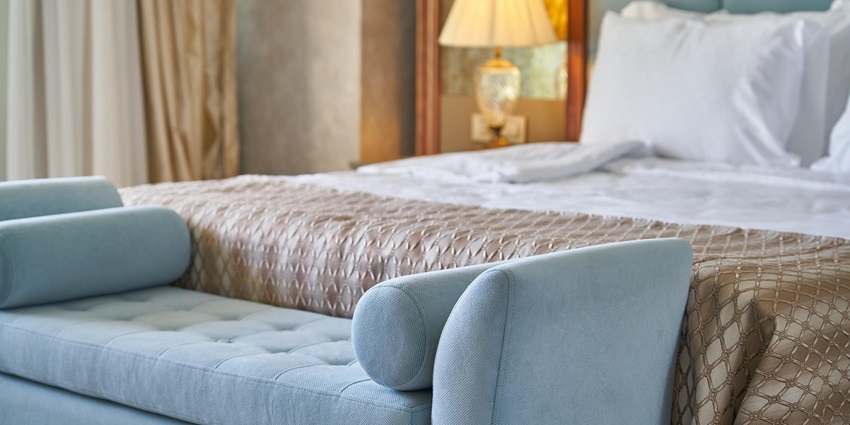
Photo: Engin_Akyurt / Pixabay / Image For Representation Only
Accommodation options near the waterfall include motels, lodges, and holiday parks. The Whistling Frog Resort is one of the most popular choices, offering cabins and cottages close to the waterfall. There are also options in Owaka, such as Catlins Mohua Park and Owaka Lodge Motel, which provide comfortable stays with basic amenities.
Where To Eat
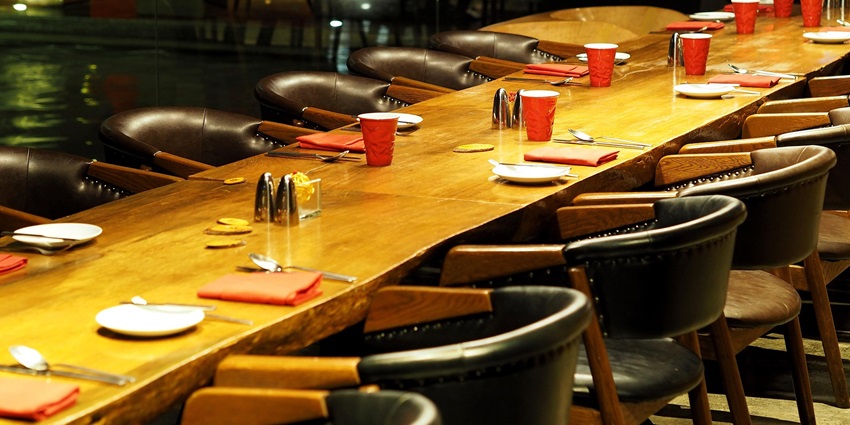
Photo: eak_kkk / Wikimedia Commons / Image For Representation Only
For dining, The Whistling Frog Café & Bar near the waterfall location serves burgers, seafood, and coffee. Another option is Lumberjack Café in Owaka, which offers fresh sandwiches, pies, and local delicacies. The Catlins Café is also a good stop for quick bites and coffee before heading to the falls.
Best Time To Visit
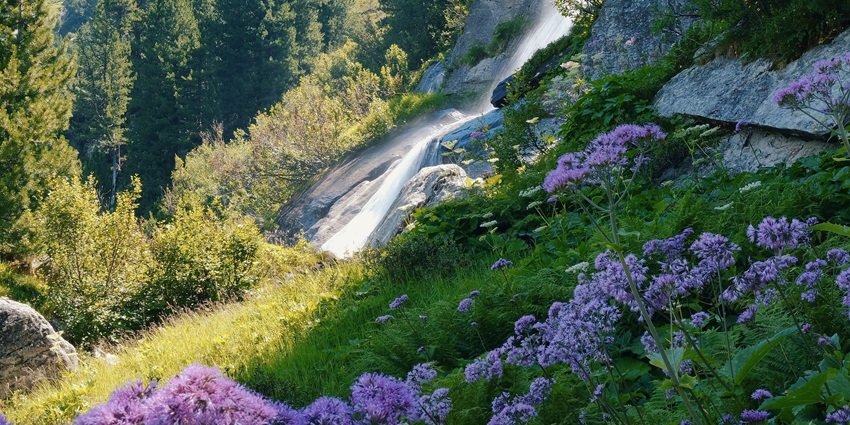
Photo: shogun / Pixabay / Image For Representation Only
The best time to visit the waterfall is during the summer months (December to March) when the weather is pleasant and the trails are dry. However, if you prefer fewer crowds, visiting in the shoulder seasons of spring (September to November) or autumn (March to May) is also a good option. Winter (June to August) brings rain, muddy the track but enhancing the fall’s water flow.
Other Factors To Consider
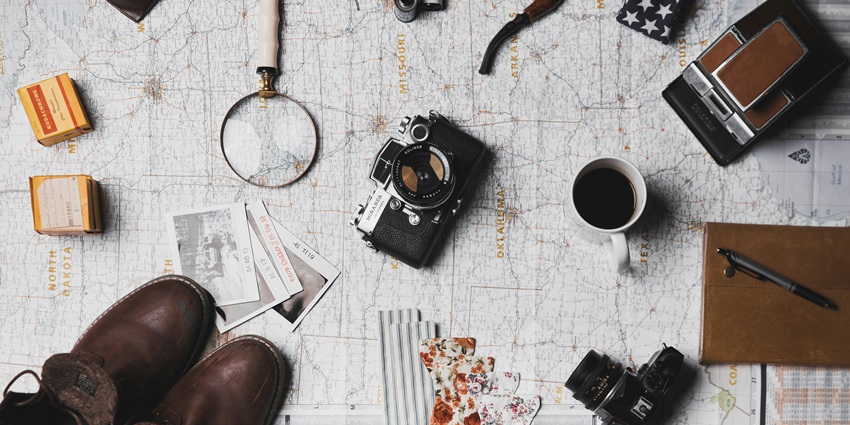
Photo: ian dooley / Unsplash / Image For Representation Only
Average Cost Of The Trip
The trip cost to the waterfall varies based on accommodation and transport. A budget trip, including transport, food, and stay, can cost around NZD 100-150 (₹5000-7500) per day per person. A mid-range trip with a private rental car and better accommodation may cost NZD 200-300 (₹10000-15000) per day.
Tips For Travellers
- Wear comfortable shoes as the walk to the falls involves uneven terrain.
- Carry a waterproof jacket, as the weather can change quickly.
- Check McLean Falls timings before planning your visit.
- Take plenty of water and snacks, as food options near the falls are limited.
- Visit early in the morning to avoid crowds and get the best photos.
McLean Falls is a must-visit destination in the Catlins region, offering a short but rewarding walk to a beautiful waterfall. The surrounding attractions make it an excellent addition to any South Island itinerary. Whether you’re taking photos, exploring nearby places, or simply enjoying the natural beauty, this place has something for every traveller. Plan your visit with TripXL today and explore the stunning waterfalls of New Zealand!
Cover Photo: hdkaradeniz / Pixabay / Image For Representation Only


 WhatsApp
WhatsApp
 Twitter
Twitter
